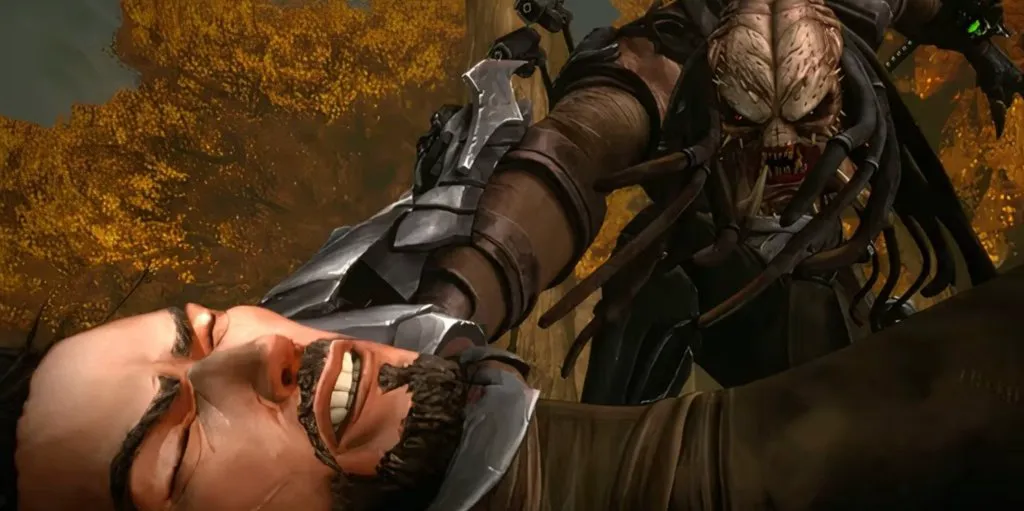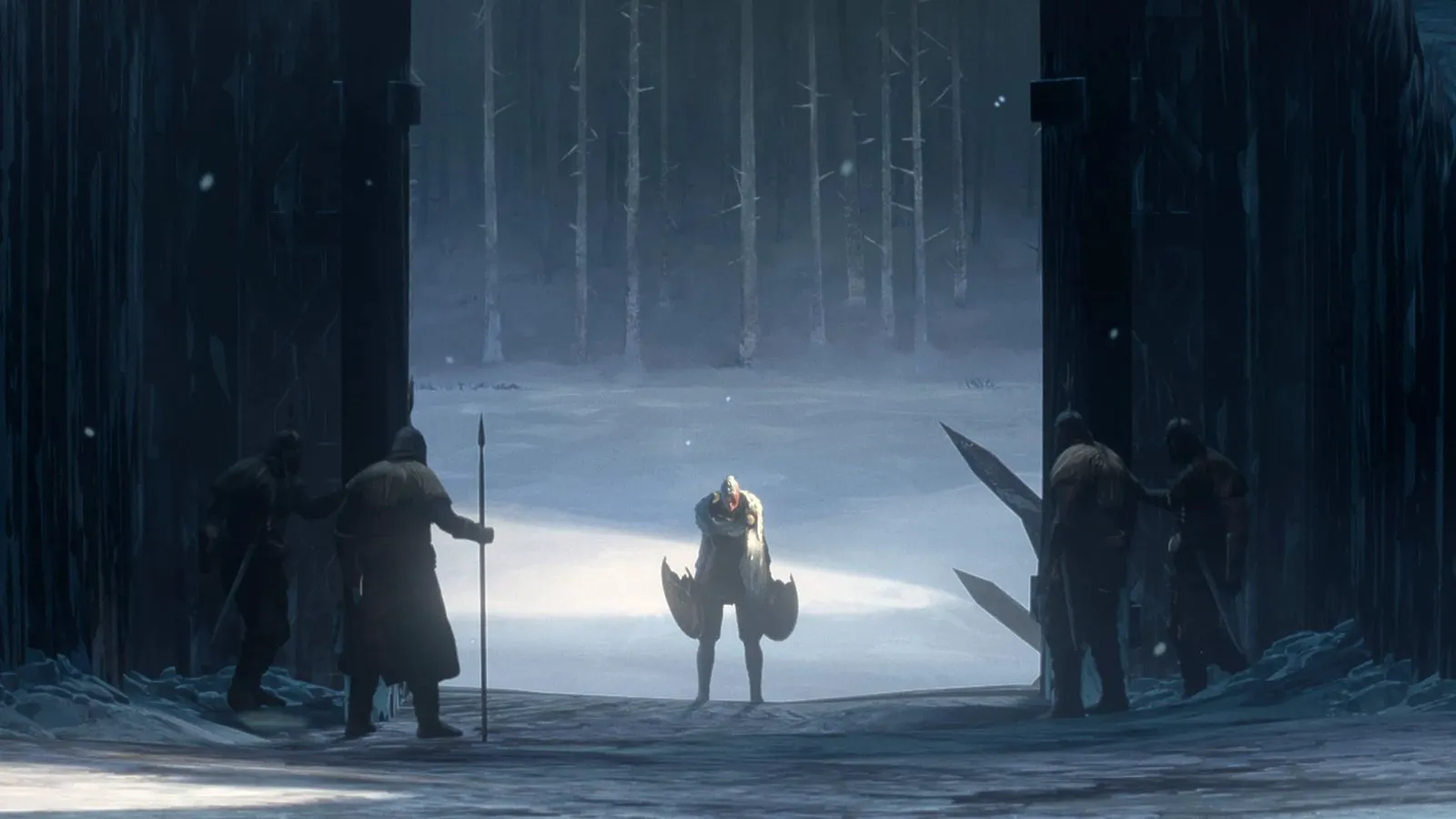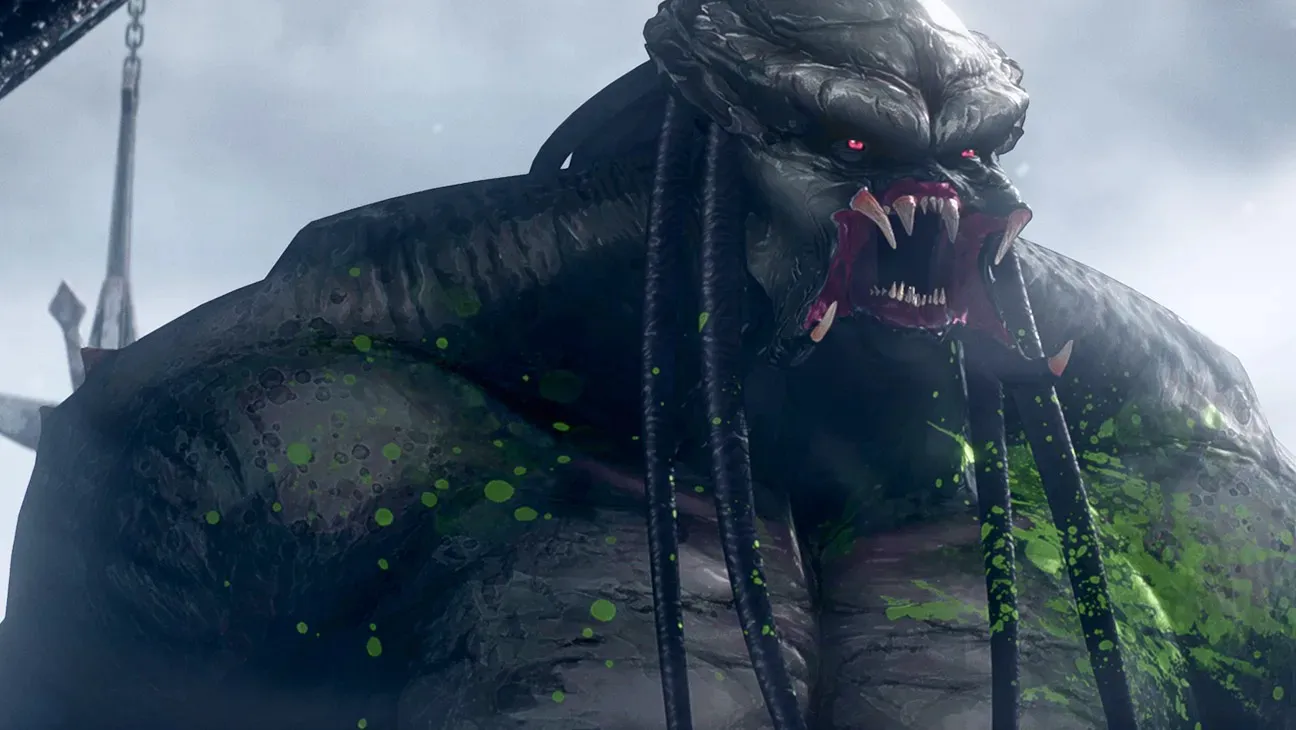Predator: Killers of Killers - An Animated Expansion of the Universe
Every Predator movie seems to kick off like a setup for a wild joke. “Predators” threw together a Yakuza, a soldier, a gangster, a doctor, and even a Russian special forces operative. “Prey” pitted the alien hunter against a tribe of Comanches and their fiercest warrior. Director Dan Trachtenberg isn’t stopping at prequels; he’s taken this pop-culture icon under his wing. Alongside Joshua Wassung, he’s released an animated film for Hulu and is gearing up for “Badlands,” another film about the extraterrestrial monster, all while expanding the universe with delightful Easter eggs.

Frame from the animated film “Predator: Killers of Killers”
A Clash of Eras: Vikings, Samurai, and Pilots
“Killers of Killers” unfolds across different historical periods, each presenting a unique challenge for the Predator.
- 841 AD: A Scandinavian warrior, Ursa, leads her squad to war against a rival clan, only to encounter a far more dangerous threat – an extraterrestrial Predator.
- 1609: A samurai seeks revenge on his brother for a past defeat, but an alien intruder breaches the castle walls.
- 1942: A pilot named Torres is drafted into the army and sent to serve in the Navy. Over the Atlantic Ocean, he faces not only enemy aircraft but also strange alien visitors.
Following a series of battles, these earthbound warriors are captured by the Predators and forced to participate in deadly combat on an unknown planet. They are pitted against each other in a fight to the death. Only the strongest will survive. Or perhaps all three, if they can bridge their cultural and historical divides and unite.

Frame from the animated film “Predator: Killers of Killers”
A Feast of Imagination and Action
“Killers of Killers” is as inventive and vibrant as a child’s imagination. We see a Predator in 17th-century Japan, battling Vikings in the 9th century, and engaging in aerial combat during World War II. The film also expands the monster’s variety, showcasing Predators with different sizes, abilities, and fighting styles. The earthlings are no slouches either. During intense battles, these seasoned killers from their respective eras demonstrate their strengths and weaknesses. For example, a nimble samurai can evade a Predator with infrared vision by darting across castle rooftops. The Predator’s ferocity is aptly countered by a Viking who scoffs at death, knowing all paths lead to Valhalla. And fighter pilots, if quick-witted, can trap an alien ship over the Atlantic.

Frame from the animated film “Predator: Killers of Killers”
Bridging Eras Through Instinct
Trachtenberg’s creation sacrifices character depth to build a bridge between eras, driven by the instinct of killers drawn to each other to determine the strongest. This struggle for dominance has been a core theme of the franchise since the original film starring Arnold Schwarzenegger. Interestingly, “Killers of Killers” has surpassed even that film in ratings, boasting a 97% freshness score on Rotten Tomatoes. The Scandinavian warrior, the Japanese samurai, and the daring pilot all find themselves on an alien arena, providing entertainment for the Predators, who seem to enjoy a Roman Empire-esque spectacle of gladiatorial combat.
“Killers of Killers” can become tiresome if taken too seriously. At times, it’s best to simply shrug off the implausibility of highly intelligent Predators struggling against a handful of warriors plucked from history books. Animation serves as a medium for unleashing unrealized creative potential. What some might see as a dumping ground, others view as a forge of creativity. Even “Terminator,” another iconic franchise from the 80s, recently received an animated series that breathed new life into the story.
A Bold Experiment in the Predator Universe
“Killers of Killers” dares to explore ideas that mainstream cinema might shy away from. Instead of lengthy introductions, it immediately poses the question: “What if?” The film blends “The Viking,” “Top Gun: Maverick,” and “The Hunger Games” into a single narrative. It maintains a relentless pace, offering no pauses. The samurai segment, for instance, unfolds without dialogue. The stop-motion technique, clearly inspired by “Arcane” and “Spider-Man: Into the Spider-Verse,” finds its place in “Predator,” a welcome departure from the chaotic CGI style often seen in video game cutscenes. While the film’s experimental and free-spirited graphics are sometimes effective, they can also feel excessive and overwhelming.
Trachtenberg and Wassung’s project is merely an intermediate step in the evolution of the Predator, a warm-up before a new leap. This bloodthirsty spin-off, composed of raw imagery and crafted by a devoted fan for other fans, may not stand up to logical scrutiny, but it resonates on a primal level, tapping into our ancient instincts to fight, flee, and, when necessary, freeze.